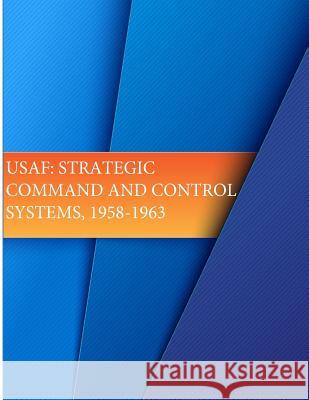USAF: Strategic Command and Control Systems, 1958-1963 » książka
USAF: Strategic Command and Control Systems, 1958-1963
ISBN-13: 9781508884477 / Angielski / Miękka / 2015 / 68 str.
USAF: Strategic Command and Control Systems, 1958-1963
ISBN-13: 9781508884477 / Angielski / Miękka / 2015 / 68 str.
(netto: 56,57 VAT: 5%)
Najniższa cena z 30 dni: 55,53 zł
ok. 13-18 dni roboczych
Dostawa przed świętami

Darmowa dostawa!
Under normal circumstances, the command and control of the nation's strategic air forces is a tremendous task. At the start of the 1960's, for example, an average of 122 bomber and tanker aircraft of the Strategic Air Command (SAC) were airborne each day, with inflight refueling taking place at the rate of once every 6.8 minutes. Large-scale exercises by the command often involved more than 500 aircraft. The enormous size of SAC, with 260,000 men and thousands of aircraft scattered around the globe and with intercontinental ballistic missiles (ICBM's) beginning to enter the force, greatly compounded the problems of command and control. To supervise and direct this widely dispersed force, the Air Force and SAC over the years built a worldwide communication network for the rapid transmission of information and action directives. The network in 1960 included: {a) a primary alert system of voice communications between SAC's underground control center at Offutt, AFB and all base control rooms in the United States and overseas; (b) a single sideband high frequency point-to-point radio system; {c) a telephone system for day-to-day operational control purposes; and {d) a teletype system to convey printed operational information. These several systems generated huge amounts of data on the daily status of the force which were continuously processed and displayed in the SAC control center. As early as 1954, however, the flood of information bad become so great the SAC commander {CINCSAC) expressed concern over the center's inability to stay current with the disposition of the force. The primary difficulty involved the center's machinery for data reduction, correlation, and display. Based on manual World War II devices and techniques, the processing fell further and further behind the improved operational capabilities of the airborne elements.











